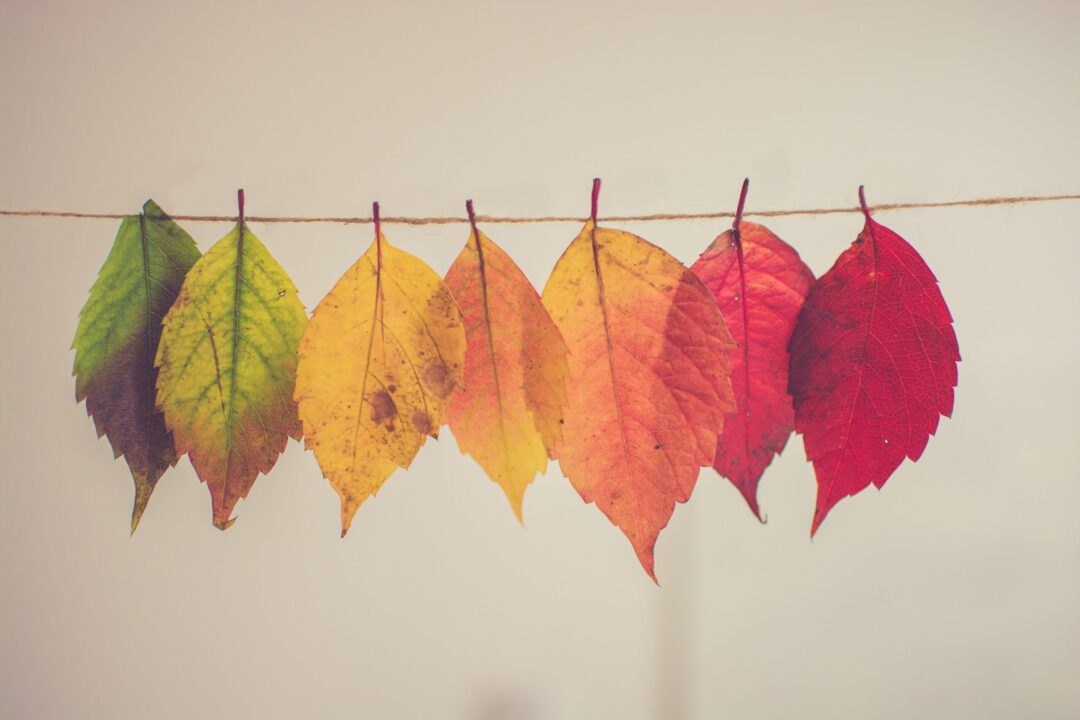
As women, we cycle through the four seasons each month, but they also represent different phases of our lives. Without judgement, let’s look at what each season has to offer…
Do you still cycle regularly? Even if you are not so regular anymore, you may find you have even more information to pay attention to. Consider the perspective of the seasons…We embody the four seasons in each and every healthy menstrual cycle. The four seasons are also mapped out in our lifecycle as well.
Seasons of Your Menstrual Cycle:
· Winter are the days of menstruation, when hormone levels are low
· Spring are the days leading to ovulation after your bleeding days, as estrogen begins to increase
· Summer corresponds to the peaking of estrogen around ovulation
· Autumn is after ovulation, when progesterone rises, and you are in the luteal phase of your cycle
It behooves us if we are still cycling, even if irregularly, to investigate how each stage of our cycle makes us feel, physically, psychologically and emotionally.
In winter, our bleeding days, our hormonal levels are low, and we typically need to lay low. This is a time for rest and centering. This is where the seeds of something within (an idea, intuition, insight) are often planted, but the time for action is not yet here. We should continue to lay more dormant and allow the activity to gather below ground. Because estrogen can already be on the rise from about day 3 of your cycle, you may begin feeling your energy also increase. It is a good idea to harness this energy slowly, and not begin expending it too early.
Our yoga practice during this phase is about resting and making adjustments. We practice poses that soften the belly and groins, cool the body and relax the brain. Supta Baddha Konasana (Reclining Bound Angle Pose) is an excellent posture month-long, but a must during menstruation.
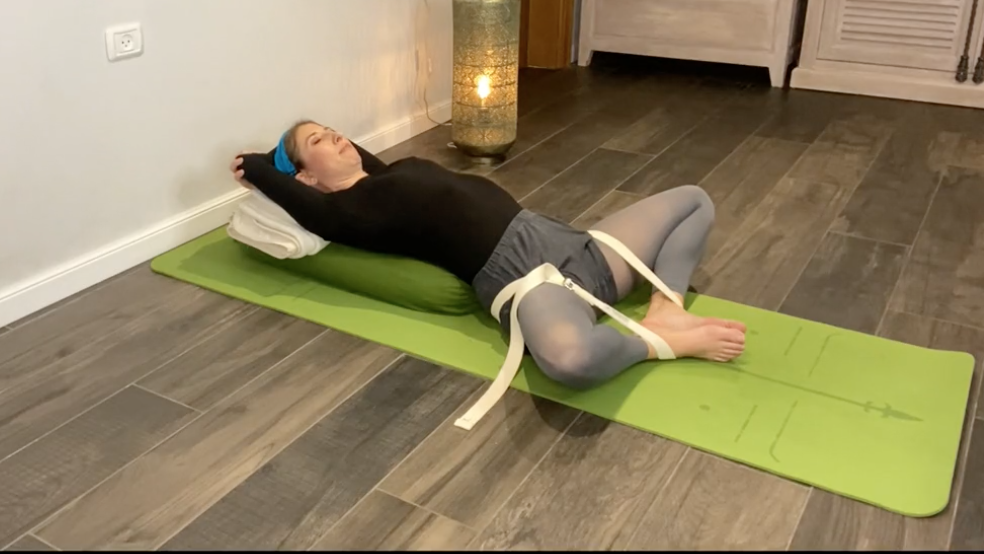
You do not practice inversions (sorry no headstands or shoulderstands) during menstruation, but you can do replacement poses that offer similar effects (like Dwi Pada Viparita Dandasana and Setu Bandha Sarvangasana).
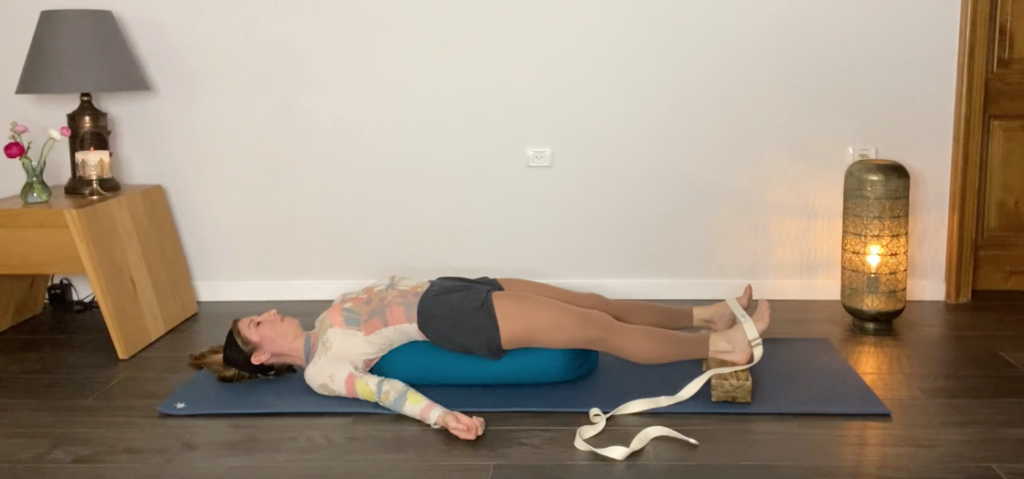
The follicular stage, the spring of our cycle, as we gear up for ovulation is typically a productive time in our cycle, where we feel and look good, are interested in other people, have more natural curiosity and creativity in the world. Ideas may abound, and we actually have the energy to invest in them. We tend to have an increase in sexual desire in our spring.
Our yoga practice during this phase is about gathering energy, trying new things, attempting challenges. It is important, however to take at least one day to transition from menstruation into a more active practice, for both physical and emotional stability. By transition, I mean that you don’t immediately jump into your most challenging practice. Take some time to get up and get moving. Inversions, if you are an established practitioner, are practiced now. In fact, my favorite transition sequence includes lots of head down poses, for example, Adho Mukha Svanasana (Downward Facing Dog), Uttanasana (Standing Forward Fold), Parsvottanasana, as well as the classic inversions (Headstand and Shoulderstand – Sirsasana and Salamba Sarvangasana).
If you are a mature practitioner, you may notice that the hormonal surge of estrogen brings you into a state of imbalance. For example, if your energy has skyrocketed and you are feeling that a bit of manic energy has seeped into your life, consider balancing it with some quieting poses. Senior Iyengar Instructor Bobby Clennell suggests some forward bends during this phase if you are overly energetic. There is always wisdom in finding balance to the natural flow of hormonal energy.
Ovulation, our summer, brings not just the peak of estrogen but also higher levels of testosterone. You may feel your ability to communicate is better; you may be more likely to try new things or take new risks. Sexual desire is still high, and we are energetically primed to productively take our ideas from spring to the next level. Right after ovulation, you may feel an energetic dip, as the hormonal high of ovulation plummets, but that typically levels out in autumn.
This is your peak fertility…the time when potential pregnancy would occur. This is a rather holy moment in the cycle of a woman’s life. For those that struggle with infertility, this is also a time of great tension and stress. So much pressure is condensed into these couple of days. If you are trying to conceive, and it isn’t coming easily, the “just relax” advice is seriously off-putting. Well, I’m not going to say it here either. I will say, however, that experiencing your entire cycle, and not just ovulation, as an opportunity for balancing the space and softness of your pelvic bowl, your stress response system, and developing appreciation for the functions of your body that are working, may bring you peace of mind and just perhaps help with that relaxing.
Different women experience ovulation differently, some feel pelvic discomfort (Mittelschmerz, the German word for “middle” or ovulation pain) or heaviness in the groins, others feels light, bouncy and energetic. You should continue to practice inversions but develop sensitivity to your own energetic levels. Don’t strain the abdomen, keep it soft and invite circulation. Feel and appreciate the fullness of the potential your body offers.
Autumn comes along with the increase of progesterone and this becomes a time when you really want to take care of that unfinished business. Not so much because you are feeling inspired, but more because you just want to clear off your desk. Progesterone is the hormone that supports pregnancy (pro – for, gest – pregnancy), and these days are usually fairly mellow after ovulation. Sleep often comes more easily during autumn. However, soon enough, that witchy woman inside of us often comes out. What we often classify as symptoms of PMS, especially the dissatisfied, frustrated, and irritated aspects are real and present feelings and not to be written off. They are more prevalent because there is less estrogen glossing over things (estrogen can make us much more compliant ). It is important to give heed to these feelings and emotions that arise. When you are cycling regularly, it is so easy to just brush them off, because the influx of estrogen after your period often makes everything right as rain. However, you aren’t fabricating that which is distressing to you during these days. Don’t just wait it out. Look at the deeper causes to your dissatisfaction, especially if it is in the realm of a relationship. Because, when you get to midlife, and find yourself stuck for months at a time in this phase of your cycle…watch out! That which you did not deal with earlier may just blow up. Your brain and body chemistry changes in perimenopause tend to ignite some serious disrupt if you haven’t taken the time to renegotiate terms and relationships earlier. For many women, it is a simple matter of communicating needs and priority shifts. Listen to what your intuition is drawing into the forefront of your emotions and thoughts during this luteal phase.
However, a healthy cycle shouldn’t really have strong PMS…just because it is terribly common doesn’t mean that it is what we are meant to experience. It is quite possible that you are experiencing nutritional imbalances that are impacting your hormones. Notice what is going on, and I suggest tracking your cycles to help you understand your specific patterns.
In the days just preceding your menstruation, you may find you are much more tired and ready for rest, as both estrogen and progesterone decrease.
Your practice here should complement your premenstrual energy levels and if you are just feeling a bit low, but not particularly PMSy, you can consider adding in some back bends to boost your energy. Continue practicing inversions up until the bleeding days. I find that the day before my period comes, my energy tanks and I need to go to sleep early and disconnect from the people in my life. When I honor this need, and all the phases of my cycle, I find that I am working with my body, maximizing my energy and intuition, and connecting deeply to my biology.
For she that was trying to conceive, and was unsuccessful, the disappointment can be deep and dark as she feels her menstruation approach. This depression is normal for her both intellectually and hormonally. It was an unfulfilled promise for her, and she should respect the cycle of feelings and give them the time to be felt. So often, because the cycle renews once again, and hope and potential rebuild, she may feel rushed into the next cycle. Ever heard the phrase, “there’s always next month!”? Well-intentioned and true as that may be, a woman needs to experience her disappointment before jumping right back into “try again.” I think that giving space for the weight of her loss (loss of potential that month) in the days preceding and of her menstruation allows her to grieve that moment and then move on. Her yogic practice will support her. In particular, Adho Mukha Virasana over a bolster is particularly nourishing.
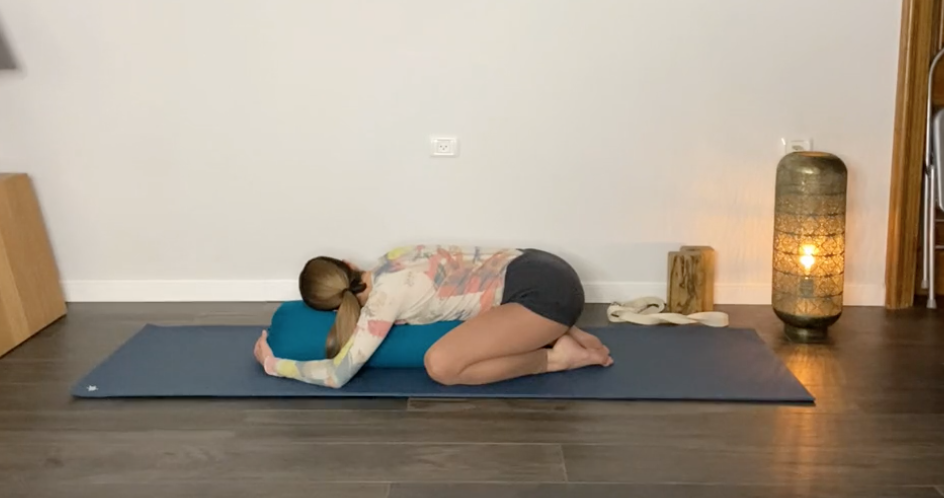
Our ability to draw sensitivity and awareness from our cycles and our behaviors that correspond to these fluctuations is a real paradigm shift for many women. Women that have experience in their cyclic wisdom, from charting their cycles or otherwise, will certainly appreciate that their yogic practice or any exercise routine should be adapted and modified to suit their phase of the cycle. We owe a great debt of gratitude to Geeta Iyengar, for the depth of knowledge she has bestowed upon us in the field of Women’s Yoga. I draw upon her wisdom and that of the senior teachers in the Iyengar Yoga method in the writing of this article.
Now let’s change the angle that we are looking at women and zoom out to her lifespan.
Seasons of a Woman’s Life:
Our entire life can be seen in a broader relationship to the four seasons as well.
· Spring is our adolescence, the forming of our body, our initial identity, gathering of energy and leading up to our fertility years
· Summer is like our years of fertility, childbearing and child rearing
· Autumn corresponds to our perimenopausal phase, whereby reproductive hormones begin to decrease and transition
· Winter is menopause, where we have had our last menstrual period
In Spring we are compelled to throw ourselves into life, with enthusiasm and energy. Our yoga practice, if we actually have one at this age, is destined to be lively and bright. With effortless jumps, broad movements and fear free inversions, she tests her body’s boundaries and limits with the joy of exploration. An early yogic practice can expose her to the value in rest, though this will probably be difficult for her. She is mostly interested in expanding her horizons in the potential of her body, developing confidence in its abilities.
Unfortunately, the young woman receives many unhealthy messages in our society. Programming from social media, news and television. From peers and parents…it is a time where she is not yet fully equipped to handle the extent of decisions that are thrust upon her young mind and body, and many images she is exposed to are not healthy. Not to mention the hormonal fluctuations she is going through as she comes into her cycling nature. If she is very lucky, she will be guided into the wisdom of paying attention to and honoring her cycles at a younger age. But to be honest, most young women aren’t given this perspective. Instead, we are told, often by the advertisements and marketing in the media, that she can and should do everything all the time. That tampons and birth control represent freedom and every day she should show up at peak performance, regardless of where she is at in her cycle.
If that sentence stirs up your feminist juices and you are getting angry with me, please consider that I’m not saying that she needs to retreat to the red tent for a week and not have contact with anyone. Nor am I saying that she can’t be a top performer in whatever she chooses to do, or that being a cycling woman makes her weak.
It is actually a very feminist statement. Her feminine nature, and when she learns to respect the variation in her qualities throughout the month, can bring her into a state of even greater power. She can hone her skills, her intuition and work strategically, synergistically with her hormones to become fully effective at all phases of her life. Instead of denying or ignoring what is happening in her body.
Most young women simply are not given this opportunity in our current society.
In fact, the very first time most women learn about the details of their cyclical nature is when they are in their Summer. They are trying to get pregnant, and it didn’t happen the first time, or isn’t happening so easily. Charting for fertility is a great time of enlightenment for most women that go this route, as we are suddenly exposed to all sorts of myths that were perpetuated in our sexual education, or lack thereof.
Understanding her ovulation, and that this occurs not at a set day (day 14) but on a day that is unique to her body and circumstances, can be revelatory. To understand that stress and lifestyle choices affect her cycles. To understand that years on birth control pills was perhaps denying her years of wisdom about her own body.
Often women turn to yoga in these years, to help them manage aches, pains and stress. As a form of exercise that just makes them feel better. Many styles of yoga, in particular those that were cultivated in the West as exclusively a fitness method do not necessarily offer support of a cyclical nature to the woman. However, many styles do, and in particular, Iyengar Yoga as a method has studied and given us much wisdom on the subject. Largely thanks to Geeta Iyengar, Lois Steinberg, Rita Keller, Bobby Clennell and many others, we are gifted with resources to help a women tremendously in her life cycle.
This is an ideal opportunity for her, in these years of pregnancy, births, lactation, and child rearing to find the time and space on her mat to cultivate a deep knowing of herself. To find rest, quiet and stability as life demands so very much of her body and her time. Yoga can be incredibly balancing to this busy woman. Her practice is at times very active and challenging, and at other times a respite from physical demands.
Shifting now to the Autumn of the woman, things start to change, yet again!! Much like adolescence, as the young woman must adapt to the stormy changes afoot (in body and mind), the perimenopausal transition is a turbulent one for so many women. We have to contend with our changing shape, our hormonal shifts, feeling out of touch with what used to be normal, and the psychological and physical toll of aging.
What was established in her summer as regular albeit cycling, has become confusing. Even she who was so in touch with herself and her body, eating nutritiously, well-fit in body and mind, cannot escape the inevitable changes. Now, every woman’s experience is unique, and some women have fewer symptoms than others. Women that have artificial/surgical menopause (as a result the removal of the ovaries or certain cancer treatments) and are suddenly plunged into menopause typically have symptoms more severe than natural menopause. Hormone Replacement Therapy will also affect the trajectory of her perimenopause if that is the route she takes.
The perimenopausal woman must contend with an extended process of letting go. Of letting go of her fertility, of letting go of her children as they grow up and become independent, of letting go of her youth. The psychological challenges she faces, in addition to so many uncomfortable physical experiences, can be truly heart wrenching. She may just feel horrible at times, stuck in a PMS-like state as months pass between periods. She may suddenly feel anger or rage at those in her life, spouse, work colleagues, family members…even innocent passerby’s. She may suddenly feel deep grief without necessarily understanding why. She may feel fear. Depression, rage, anxiety, fear, irritation at all others, grief…all of these “negative” emotions are arising as the protective layers that her hormones once offered are thinning. They begin to reveal deep truths that may be uncomfortable or downright intolerable.
Her ability to understand and accept this process, difficult though it is, and use this time to process those emotions, will transform her transition into a healing time.
Yoga during this time is deeply nourishing and can contribute to healing. In general, the perimenopausal woman will find yoga poses to cool the body, to help her balance her hormones, and maintain the right balance of stress in her life. Inversions, especially supported inversions, Viparita Korani, Setu Bandha Sarvangasana and Salamba Sarvangasana (the mother of all poses, shoulderstand) become the bridge that she can travel to cross into the second half of her life. Because Winter’s coming.
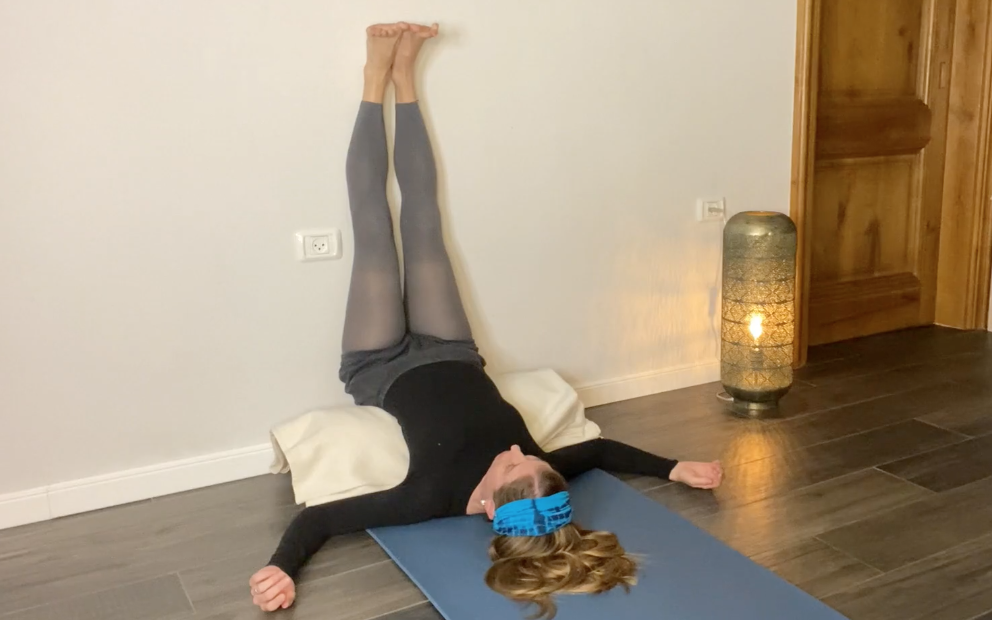
Menopause. The final menstrual period.
This is the end of the climacteric, the turbulent metamorphosis of the woman. And what is so strange, is that she cannot fully recognize that last menstrual period in the moment. Only the passage of time will reveal whether it is in fact the final one. She must wait a year to confirm.
Many women I’ve worked with have come close, 11 months since the last period, before having another. It is a strange time, to be so very close, but not actually there. For those women, I believe they get that next period, after such a long pause, as a gift. Another chance at something. Not fertility, but as another poke of awakening something within that they haven’t yet acknowledged. That is buried deep in their tissues, and the body gives another shout to her to awaken to some wisdom.
For many women, this is a time of necessary retreat. If she can, if she can burrow in a bit and spend some quality, secluded time with herself at the end of this final transition, to give it it’s due and honor as the end of era, then she is all the more ready to reemerge at its resolution.
Her yogic practice should reflect this quiet state, and in fact, can be the place that offers her retreat. Supported Ardha Halasana (Supported Half Plough pose) is a wonderful pose that is balancing, quieting and internalizing.
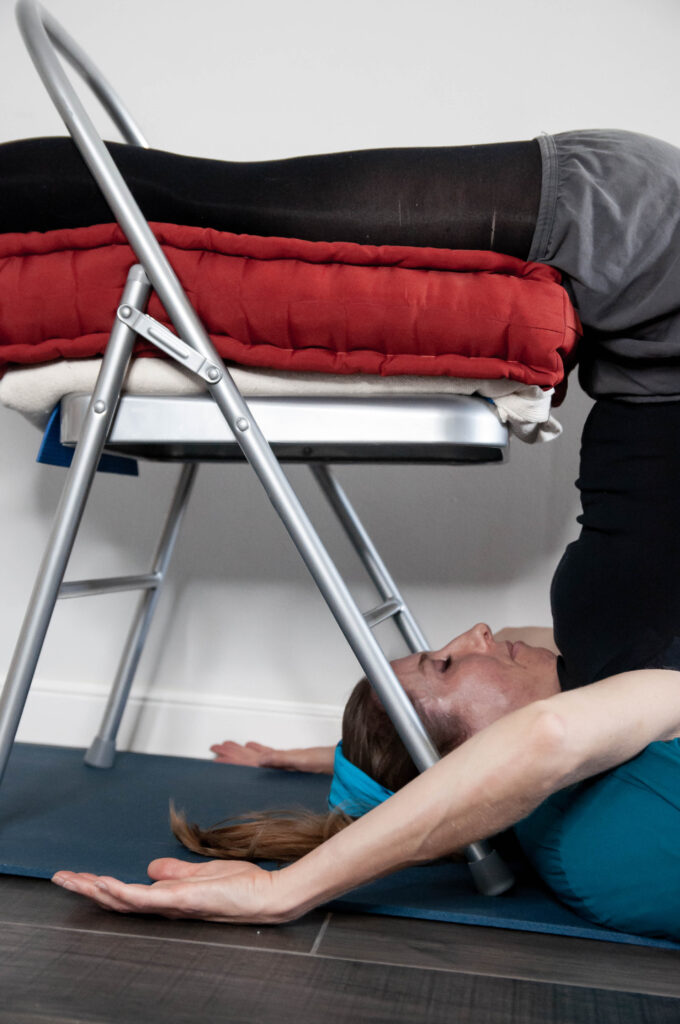
If we ended here, in the winter of our lives, menopause essentially would equal death. Well, there is an aspect of death associated in both winters…in our menstruation, which we have because a potential life was not conceived, and in menopause, where we no longer have the ability to give birth to another human.
“But the seasons don’t stop at winter. They continue cycling.“
The menopausal woman is likened to being in a chrysalis for some time. However, spring comes again, the butterfly emerges from the chrysalis, and the menopausal woman exits her winter, in her second spring, having done the work of refining her identity, gathering new energy for that which she will accomplish in her second half of life and ready to give birth to herself. If she was successful in that extended process of letting go, she will find that there is something new to hold on to.
We are truly ready to be reborn after the metamorphosis of perimenopause and menopause. Yes, there are those that head to decline, but most women who turn to accept the process and appreciate the journey they are on find it a time of intense healing, truth seeking and truth speaking. True growth doesn’t come easily, and many women find comfort in the knowledge that their struggles during these midlife years bear fruit. Fruit of wisdom and wholeness, as spring comes again.
The post-menopausal woman enters the phase of her second spring as a wise woman. A steadiness, profound after a lifetime of fluctuation, is welcome. Her creativity and intuition flows, and she is steadfast source of wisdom and inspiration to others. She has much to contribute to society, and the more that we can appreciate this, the better off all of us, all of mankind, will be.
